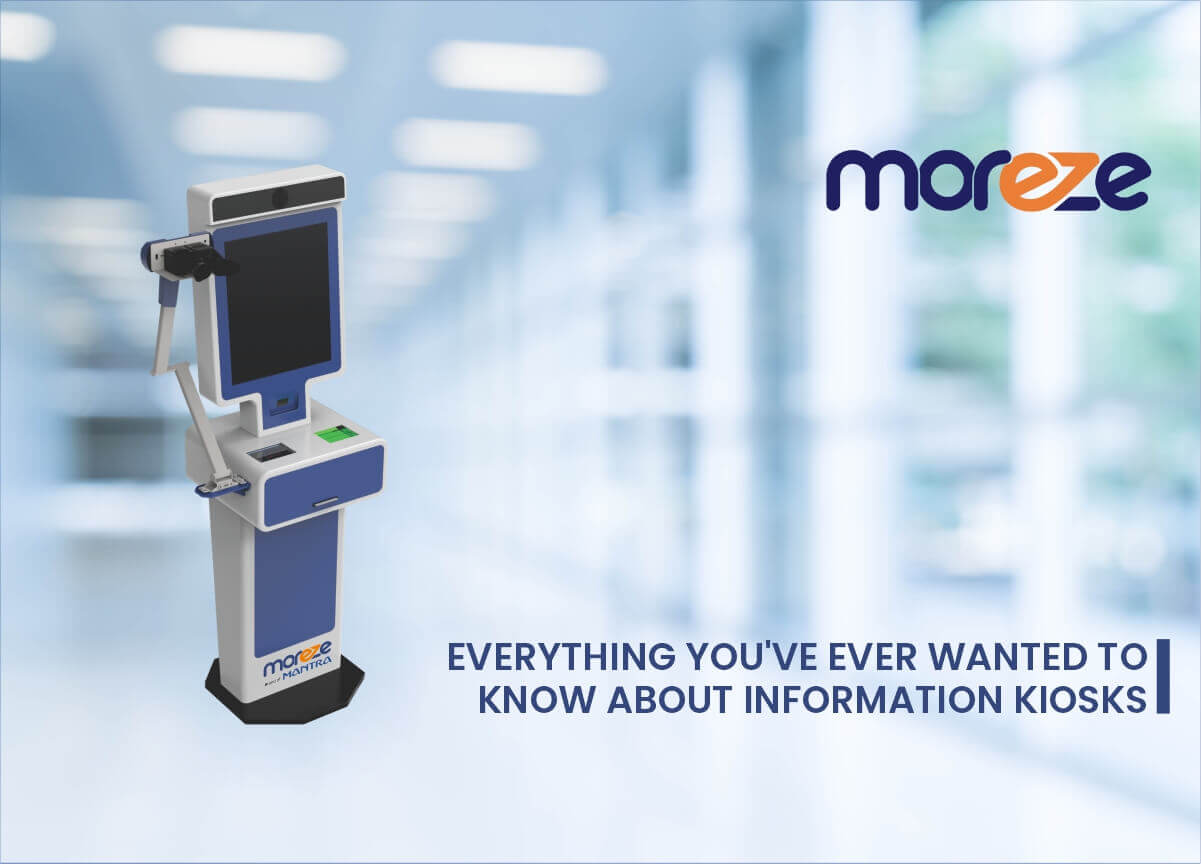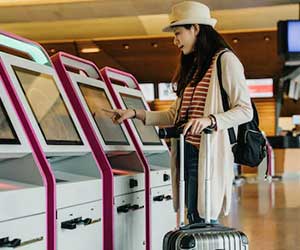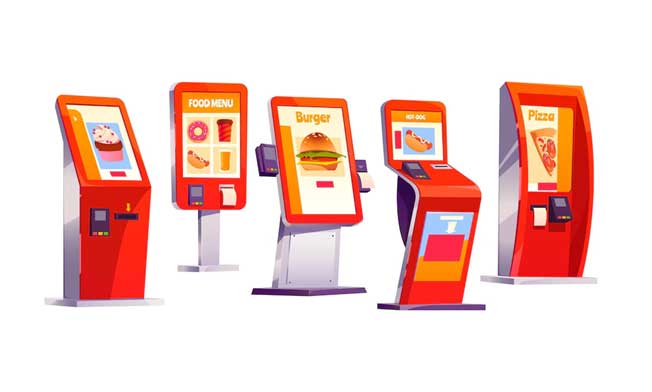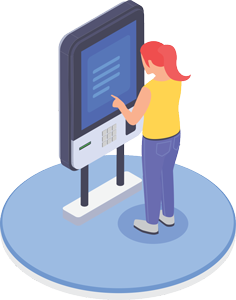Posted on 28 October, 2022 by Sivaranjith Sivaraman

Information Kiosks are interactive or non-interactive electronic stations that present information, Ads, helping signs, and navigation in public places. Confused faces in crowded places were the story of yesteryears. Now, places like malls, streets, hospitals, enterprises, museums, airports, and train or bus stations are getting smarter and more public-friendly with information kiosks. This innovative technology is changing the way people access information, find their way around, and make choices. Let us dive into the details of how information Kiosk technology is improving the quality of life.
Information Kiosks - The new way of accessing information
Information kiosks are computerized terminal that provides information to people. Kiosks are generally placed in public, where people can easily access them. They are used to store and retrieve items, which means a database contains critical information on public or private services or products. For example, an information kiosk can use as an information desk where customers can get answers to their queries or ask questions about the products sold by a store owner. This makes it easier for consumers since they can access their information whenever they want without waiting for anybody to reply to their queries. In addition, this is also beneficial because it cuts down on costs from hiring employees at different locations around town. However, there are several other ways in which one can use kiosks. Let's discuss some of them:
Train/bus ticket booking - Transport information systems
Booking tickets for trains and buses are easier now than ever before. Kiosks can make bookings for many means of transportation, such as trains, buses, ferries, and even taxis. Bus and railway information kiosks can assist passengers in finding the location of buses and trains and their schedules. They can also show passengers the location on the map.

Banking Services
Consumers can check their balance, pay bills, make payments and withdraw money from the Banking Kiosk. They only need to submit their account information to the Kiosk; it will assist them. It will help customers tackle the connectivity issues they face while accessing their personal devices. For banks, the information Kiosks help reduce hassle, making banking a seamless experience.
Ordering food
In this case, the Kiosk will be the server, and customers can use it to order food, generate the bill and pay for their meals. Customers may also acquire information about the menu and table availability, making it simple to figure out what things you want before going over there.

Healthcare Kiosk
The medical record management process is a vital part of the healthcare industry. The stored, retrieved and maintained data can have a major impact on patient care and outcomes. Patients can access their health records, diagnostic information, and insurance data from the Kiosk without approaching hospital officials. It plays a vital role in preventing medical errors which may happen due to the mishandling of patient ID.
Also read: Self-Service Kiosk in Healthcare Industry: Everything You Need To Know.
Hospitality management Kiosk
A hospitality management system is software that automates the whole process of hotel operation. It helps improve hotel operations' efficiency and reduce costs by cutting down time spent on manual operations. Assisting customers in the check-in process, finding rooms, and providing information about hotel amenities helps to improve customer satisfaction eventually.
Hospitality Management System (HMS) improves customer service through automated reservations, inventory control, payment processing, etc. HMS also saves time for staff members during check-in/check-out procedures because all these tasks are handled automatically by HMS software through kiosk machines.
Self-checkout
Self-checkout kiosks can be installed at the Point of Sale (POS) in grocery stores, pharmacies, and other retail outlets to check out items. Customers can check out and pay themselves at the POS Kiosk. It helps to improve customer satisfaction by allowing customers to pay for their purchases without waiting in line or speaking with an employee. The main advantage of adopting self-checkout kiosks is that they allow retailers to reduce shrinkage while simultaneously improving revenues by automizing the store.

Conclusion:
The kiosks can be used as a device for information and communication, but also as an interface to perform various transactions. Information kiosks have the potential to make our public spaces smarter and more hospitable by assisting people in their uncertainty and making transactions as simple as possible.
